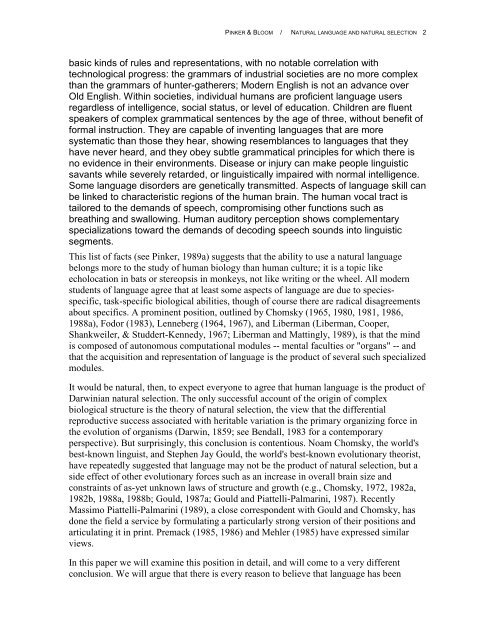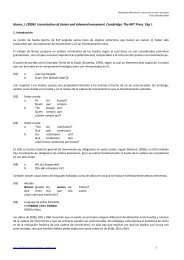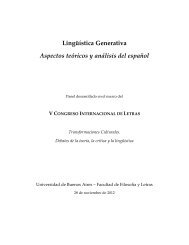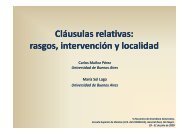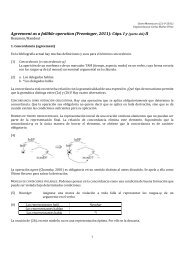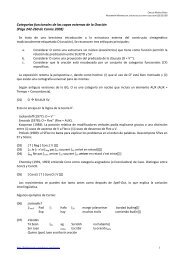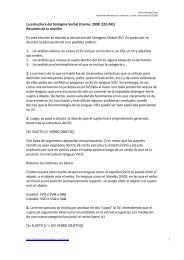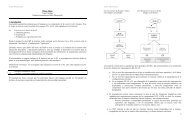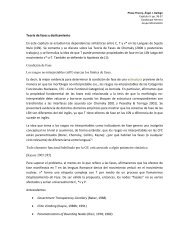Pinker - Bloom - NATURAL LANGUAGE AND NATURAL SELECTION
Pinker - Bloom - NATURAL LANGUAGE AND NATURAL SELECTION
Pinker - Bloom - NATURAL LANGUAGE AND NATURAL SELECTION
You also want an ePaper? Increase the reach of your titles
YUMPU automatically turns print PDFs into web optimized ePapers that Google loves.
PINKER & BLOOM / <strong>NATURAL</strong> <strong>LANGUAGE</strong> <strong>AND</strong> <strong>NATURAL</strong> <strong>SELECTION</strong> 2<br />
basic kinds of rules and representations, with no notable correlation with<br />
technological progress: the grammars of industrial societies are no more complex<br />
than the grammars of hunter-gatherers; Modern English is not an advance over<br />
Old English. Within societies, individual humans are proficient language users<br />
regardless of intelligence, social status, or level of education. Children are fluent<br />
speakers of complex grammatical sentences by the age of three, without benefit of<br />
formal instruction. They are capable of inventing languages that are more<br />
systematic than those they hear, showing resemblances to languages that they<br />
have never heard, and they obey subtle grammatical principles for which there is<br />
no evidence in their environments. Disease or injury can make people linguistic<br />
savants while severely retarded, or linguistically impaired with normal intelligence.<br />
Some language disorders are genetically transmitted. Aspects of language skill can<br />
be linked to characteristic regions of the human brain. The human vocal tract is<br />
tailored to the demands of speech, compromising other functions such as<br />
breathing and swallowing. Human auditory perception shows complementary<br />
specializations toward the demands of decoding speech sounds into linguistic<br />
segments.<br />
This list of facts (see <strong>Pinker</strong>, 1989a) suggests that the ability to use a natural language<br />
belongs more to the study of human biology than human culture; it is a topic like<br />
echolocation in bats or stereopsis in monkeys, not like writing or the wheel. All modern<br />
students of language agree that at least some aspects of language are due to speciesspecific,<br />
task-specific biological abilities, though of course there are radical disagreements<br />
about specifics. A prominent position, outlined by Chomsky (1965, 1980, 1981, 1986,<br />
1988a), Fodor (1983), Lenneberg (1964, 1967), and Liberman (Liberman, Cooper,<br />
Shankweiler, & Studdert-Kennedy, 1967; Liberman and Mattingly, 1989), is that the mind<br />
is composed of autonomous computational modules -- mental faculties or "organs" -- and<br />
that the acquisition and representation of language is the product of several such specialized<br />
modules.<br />
It would be natural, then, to expect everyone to agree that human language is the product of<br />
Darwinian natural selection. The only successful account of the origin of complex<br />
biological structure is the theory of natural selection, the view that the differential<br />
reproductive success associated with heritable variation is the primary organizing force in<br />
the evolution of organisms (Darwin, 1859; see Bendall, 1983 for a contemporary<br />
perspective). But surprisingly, this conclusion is contentious. Noam Chomsky, the world's<br />
best-known linguist, and Stephen Jay Gould, the world's best-known evolutionary theorist,<br />
have repeatedly suggested that language may not be the product of natural selection, but a<br />
side effect of other evolutionary forces such as an increase in overall brain size and<br />
constraints of as-yet unknown laws of structure and growth (e.g., Chomsky, 1972, 1982a,<br />
1982b, 1988a, 1988b; Gould, 1987a; Gould and Piattelli-Palmarini, 1987). Recently<br />
Massimo Piattelli-Palmarini (1989), a close correspondent with Gould and Chomsky, has<br />
done the field a service by formulating a particularly strong version of their positions and<br />
articulating it in print. Premack (1985, 1986) and Mehler (1985) have expressed similar<br />
views.<br />
In this paper we will examine this position in detail, and will come to a very different<br />
conclusion. We will argue that there is every reason to believe that language has been


